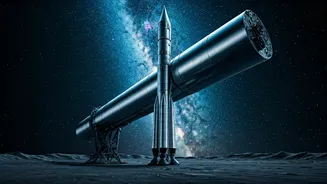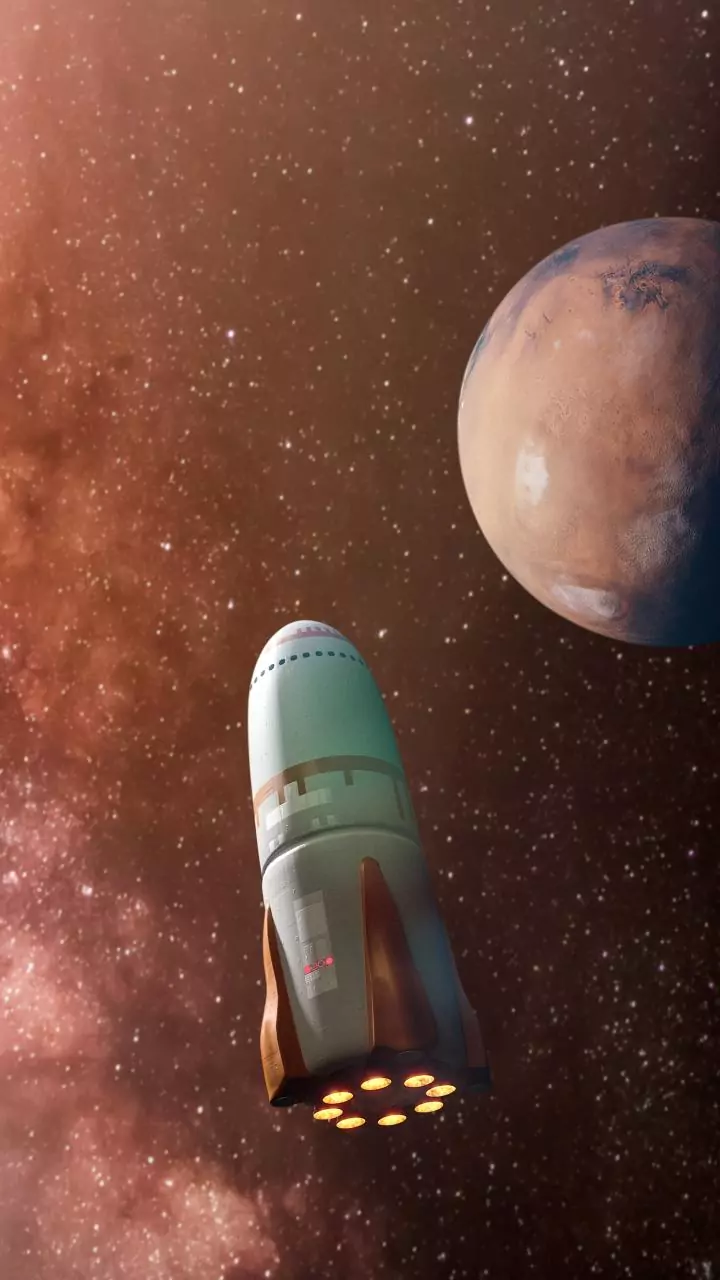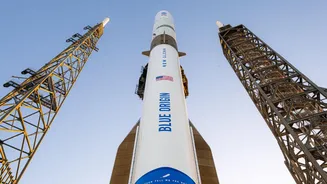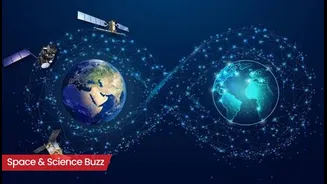Initial Launch and Goals
The recent launch by Blue Origin of its Mars probes marked a pivotal moment in the ongoing exploration of the red planet. These probes, carefully designed
and equipped with advanced scientific instruments, are targeted toward answering some of the most fundamental questions about Mars. The primary objective of this mission revolved around gathering critical data that can enhance our understanding of the Martian atmosphere, its geological composition, and whether conditions might have ever supported life. The selection of instruments on board focused on long-term data acquisition across various aspects of the Martian environment. This includes studies of the planet's climate patterns, its surface topography, and the distribution of vital elements such as water ice. Through this comprehensive approach, scientists seek to piece together a more complete picture of Mars' history and its potential for habitability. The launch of the probes was the culmination of meticulous planning, engineering, and collaboration among scientists, engineers, and support teams. Blue Origin has poured extensive resources into constructing sophisticated spacecraft and ensuring the successful execution of the mission. Consequently, the successful launch represented not just a milestone, but a testament to human ingenuity and the unwavering commitment to space exploration. The data gathered from this mission is intended to pave the way for future human expeditions to Mars, including the identification of potential landing sites, resources, and habitats.
Probe Instrumentation Unveiled
The success of Blue Origin’s Mars probe mission hinges on the advanced scientific instruments packed on board. These tools were strategically chosen to offer a multi-faceted view of the Martian environment. The probes are equipped with various sensor technologies including spectrometers, which are designed to analyze the composition of the atmosphere and identify the presence of trace gases, such as methane, that might point towards biological activity. Additionally, each probe features high-resolution cameras that allow scientists to map the Martian surface in exceptional detail, revealing the complex geological formations and features. These cameras can distinguish subtle variations in terrain, which can offer clues about past climates, geological processes, and possible sites for underground water. Each probe also has particle detectors which are used to measure the radiation environment surrounding Mars and to assess the risks posed to future human explorers. The data from these detectors can help scientists to refine their models of the planet’s atmosphere and the impact of cosmic radiation on the surface and subsurface conditions. Moreover, the probes are fitted with advanced meteorological sensors capable of collecting data on temperature, pressure, wind speed, and other atmospheric parameters. Such data is necessary to understand how the climate works on Mars, and how weather patterns could affect human operations on the planet. By collecting and analyzing the information, the scientists plan to develop more complex models of the Martian climate and to anticipate future climate changes on the planet.
Data Collection and Analysis
Following the successful launch, the Mars probes commenced the critical phase of data gathering. The comprehensive collection of information from these scientific instruments is a complex process. Each sensor on the probe operates independently, providing a steady stream of data that is then relayed back to Earth. Data transmission occurs through sophisticated communication systems, ensuring that signals are sent across vast distances without significant loss of information. Once the data reaches Earth, it is subject to rigorous analysis. Scientists from different disciplines collaborate to cross-reference the data, draw comparisons, and identify trends or patterns. This kind of collaboration is essential to interpret the raw information, validate the findings, and ensure the accuracy of the conclusions. The data is converted into visual formats, such as maps, charts, and 3D models. These tools provide a clear understanding of the intricate Martian environment. The scientists also make use of computer-based modeling to simulate various processes on Mars, such as the dynamics of the atmosphere, the flow of water, and the potential interactions between the planet's surface and subsurface. The gathered data is stored in specialized databases, where it can be securely archived and retrieved for future study. Researchers around the world can access the data, which facilitates collaboration, cross-validation, and the development of new hypotheses and research avenues. The information gathered from the probes will become an essential component in the ongoing study of Mars, and it will contribute to our understanding of the planet.
Expected Scientific Outcomes
The Mars probes are poised to yield revolutionary insights into the Martian environment, advancing our understanding of the planet's past, present, and future. Scientists anticipate that the atmospheric data, collected by the probes, will provide valuable information regarding its composition and evolution. This includes the identification of trace elements, which could offer evidence of past or present life. The probes are expected to map the geological features of the planet in unprecedented detail, including the distribution of minerals, the structure of the polar ice caps, and the presence of any underground water. Through these investigations, scientists aim to refine our understanding of Mars' geologic history and to evaluate its potential as a habitable environment. The information gathered will be used to enhance climate models, including the intricate interplay of solar radiation, atmospheric gases, and surface features. Understanding climate dynamics can help scientists in the long term by improving the accuracy of predictions, and helping to identify the conditions under which the planet could have sustained liquid water. The data can also provide critical insights into the potential for future human settlements. By gathering information on the planet’s surface, atmosphere, and subsurface conditions, scientists can identify the best locations for establishing settlements and the resources that will be available. The expected scientific outcomes of the Mars probe mission will have a lasting impact on our knowledge of the universe. The discoveries that are made will stimulate further exploration and expand our understanding of the possibilities for life beyond Earth.
Future Mission Prospects
The success of Blue Origin’s Mars probe mission holds significant implications for the future of space exploration. The technological advancements demonstrated during the mission, including advancements in probe design, instrumentation, and communication systems, will serve as a foundation for future ventures. The insights gained from analyzing the data collected will provide valuable knowledge for upcoming missions. It includes identifying promising landing sites, assessing environmental conditions, and evaluating the potential for resource utilization. Such knowledge is indispensable for planning future missions that include rovers, orbiters, and potential human expeditions. Moreover, the mission will contribute to the ongoing development of the necessary technologies for future space travel. As new discoveries are made, engineers and scientists will be able to refine their designs and create more efficient and effective spacecraft and instruments. The data that is gathered from the probes will also be used to improve the models of the Martian environment, which will allow us to assess the risks associated with human exploration. The success of the mission demonstrates the commitment and expertise of Blue Origin. This is also encouraging to other companies and space agencies to intensify their own research into the red planet. Collaboration between commercial space companies and government space agencies can pave the way for more ambitious and comprehensive exploration programs. The mission also offers an educational opportunity, as it captures the public's imagination, inspiring students and encouraging careers in science, technology, engineering, and mathematics.













.webp)